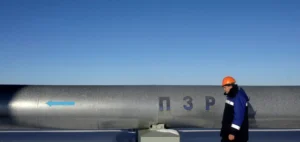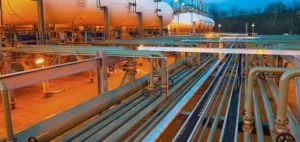American LNG seems to be Europe’s preferred alternative to Russian gas. While Nord Stream 1 is shutting down indefinitely, US LNG is flowing into Europe. In fact, nearly 60% of these shipments were sent to the European continent.
American LNG to replace Russian gas
In August, 48 of the 84 shipments exported from the U.S. went to Europe. Among European countries, France seems to have benefited the most from US LNG imports. Thus, it received 15 shipments. Spain has 10 shipments. Then the Netherlands received 8 shipments.
In addition, LNG cargo volumes to Europe have sometimes exceeded the needs of importing countries. This has led to a mismatch in the price of waterborne LNG compared to onshore gas.
U.S. LNG is taking advantage of the current circumstances following Russia’s invasion of Ukraine. The rift with Gazprom and the indefinite shutdown of NordStream 1 provide fertile ground for US LNG. In addition, Europe is determined to meet the winter demand peak despite the gradual reduction in Russian gas flows.
Gazprom recently announced the shutdown of the Nord Stream 1 pipeline. The Russian company had suspended gas flows on August 31 for three days of maintenance. It was scheduled to resume operations on September 3, but no physical flow has resumed. The Russian company mentions later problems, related to maintenance. Moreover, she adds that these problems are reinforced by Western sanctions.
This has provoked a wave of indignation in the European institutions, which are highly critical of this decision. They also accuse Russia of using this strategic action to exert political pressure on Europe. In addition, the EU states that it is not surprised and stresses the unreliability of Gazprom.
Europe finds solutions
The closure of Nord Stream 1 led to the European decision to leave the pipeline closed. This means that Russian gas reaches Europe only through Turkstream and the Ukrainian corridor.
However, with Russian gas supplies long under threat, Europe has been snatching up American LNG. Thus participating in its strategy to achieve energy independence from Russia. In this sense, Europe has seen its stocks fill up faster than expected.
The Platts Gulf Coast Marker for U.S. FOB cargoes was assessed at $41.25/MMBtu on September 2. That’s a drop of $11.55 on the day. However, the level remains 2 fosi higher than a year ago.






















